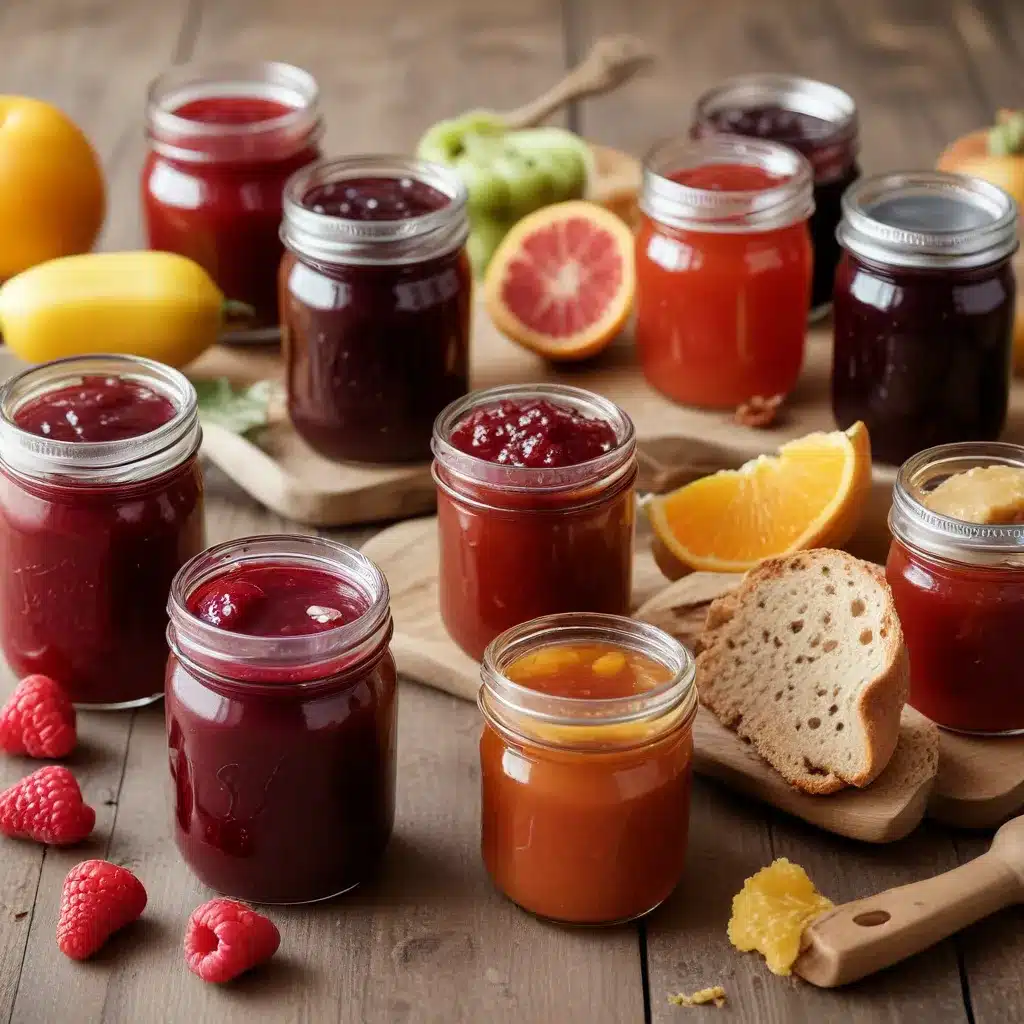
At Crooked Pines Farm, we believe that the true essence of the season can be captured in a jar. As the sun-ripened fruits reach their peak, we eagerly await the chance to transform them into vibrant jams, luscious jellies, and flavorful fruit preserves. Whether you’re seeking to preserve the taste of summer or create unique flavor combinations, mastering the art of homemade preserves can be a rewarding and delicious journey.
Fruit Selection and Preparation
The foundation of any exceptional preserve starts with the careful selection of ripe, flavorful fruits. At our farm, we carefully monitor the progress of our orchard, berry patches, and vegetable gardens, waiting for that perfect moment when the produce is bursting with natural sweetness and complexity. Strawberries, blueberries, peaches, figs, and even savory options like tomatoes and peppers all have the potential to create captivating preserves.
Once the fruits are harvested, the real work begins. Thorough cleaning and precise chopping or mashing is essential to ensure a consistent texture and optimal flavor extraction. Removing any blemishes, stems, or seeds helps to create a pure canvas for your preserves. Experiment with different techniques, such as using a food processor to create a smoother consistency or hand-cutting the fruit for a more rustic, chunky preserve.
Jam, Jelly, and Fruit Preserve Basics
While the terms “jam,” “jelly,” and “fruit preserves” are often used interchangeably, each has its own unique characteristics and preparation methods. Jams are made by cooking crushed or ground fruit with sugar, while jellies are made from fruit juice and pectin, resulting in a semi-solid, clear consistency. Fruit preserves, on the other hand, feature whole or large pieces of fruit suspended in a sweet syrup.
The key ingredients for all of these preserves include the fruit, sugar, and often a gelling agent like pectin. Depending on the acidity of the fruit, you may also need to adjust the pH by adding an acid, such as lemon juice or citric acid. Having the right equipment, such as a preserving pan, canning jars, and lids, is also essential for successful and safe preservation.
Jam-Making Techniques
Pectin, a naturally occurring polysaccharide found in many fruits, plays a crucial role in the jam-making process. Understanding the different types of pectin and how to properly adjust the levels is the key to achieving the desired thick, spreadable consistency. For fruits with lower pectin content, such as strawberries or blueberries, you may need to add commercial powdered or liquid pectin to ensure a successful set.
When it comes to the cooking method, traditional stovetop jam-making involves slowly simmering the fruit, sugar, and any additional ingredients until the mixture reaches the perfect balance of sweetness and thickness. Carefully monitoring the temperature and performing gel tests can help you determine when the jam is ready to be ladled into sterilized jars for canning or freezing.
Explore a wide range of flavor possibilities by combining classic fruit combinations, such as strawberry-rhubarb or blackberry-lime, or venture into more unique pairings like peach-basil or raspberry-balsamic. The possibilities are endless, and experimenting with different ingredients can lead to truly exceptional and personalized preserves.
Jelly-Making Artistry
Creating homemade jelly requires a slightly different approach, as the focus is on extracting the pure, concentrated essence of the fruit. Juicing techniques, such as simmering the fruit and straining the liquid, are key to obtaining a clear, vibrant jelly. Dealing with fruit pulp and sediment can be a delicate balance, but mastering these steps will result in a visually stunning and flavorful final product.
The gelation process is another critical aspect of jelly-making, as the pectin content and pH levels must be carefully managed to achieve the perfect consistency. Performing gel tests and adjusting the cooking time and temperature can help you reach the desired jelly-like texture, whether you prefer a soft, spreadable spread or a more firm, sliceable version.
Explore the world of jelly-making by venturing beyond the traditional grape or apple options. Innovative flavors like huckleberry, rosemary-infused grape, or spiced cranberry can add a unique twist to your preserves and open up a world of culinary possibilities. Pair these distinctive jellies with artisanal cheeses, grilled meats, or even as a unique ingredient in your baking.
Fruit Preserve Creations
For those who prefer the texture and presentation of whole or chunky fruit in their preserves, the art of creating fruit preserves is a rewarding endeavor. Carefully selecting, preparing, and simmering the fruit in a sweet syrup can result in a luscious, spreadable preserve that captures the essence of the season.
When crafting fruit preserves, you’ll need to decide whether you’d like a more uniform, smooth texture or a chunkier, rustic preserve. Controlling the size and shape of the fruit pieces through techniques like halving, dicing, or even leaving them whole can dramatically impact the final mouthfeel and visual appeal.
Venture beyond the classic strawberry or peach preserves and explore the world of exotic and foraged fruits. Mangoes, passion fruit, figs, and even wild berries like huckleberries or serviceberries can add a unique twist to your preserves. The key is to balance the natural sweetness of the fruit with the appropriate amount of sugar and acidity to create a truly captivating preserve.
Whether you’re a seasoned preserver or just starting your homemade preserve journey, Crooked Pines Farm is here to guide you through the process. Embrace the abundance of the seasons, experiment with flavors, and savor the fruits of your labor. Homemade jams, jellies, and preserves are not only a delicious way to enjoy the harvest but also a means to capture the essence of the farm and share it with loved ones throughout the year.


